When it comes to keeping your home comfortable and cool, the technology of air conditioning has come a long way. Mini-split air conditioners, also known as ductless mini-splits, are a game-changer in the world of climate control. But what exactly is a mini-split air conditioner, and why should you consider using one in your home? A mini-split air conditioner is a highly efficient and versatile cooling system that provides individualized climate control for different areas or zones within your home. Unlike traditional central air systems that cool the entire house uniformly, mini-split systems allow you to cool specific rooms or zones, offering a tailored and cost-effective solution for your cooling needs.
In this article, we’ll delve deeper into how mini-split air conditioners work, the different types available, how to choose the right one for your home, installation and maintenance tips, and even compare them with other cooling options. By the end, you’ll have a comprehensive understanding of why mini-split air conditioners are a fantastic choice for keeping your home comfortable and energy-efficient.
How Mini Split Air Conditioners Work?
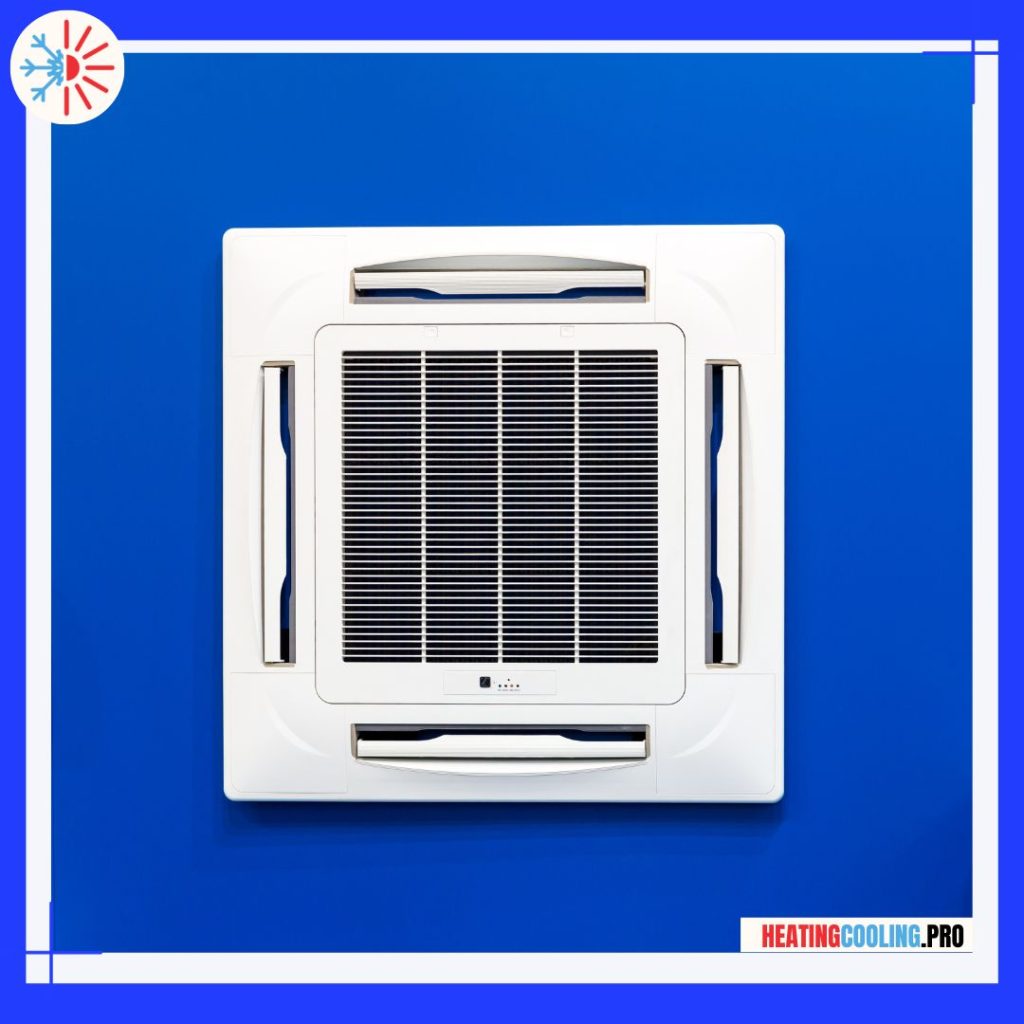
Understanding how mini-split air conditioners function is the key to appreciating their efficiency and effectiveness. These systems work on a straightforward yet highly efficient principle, and here’s a breakdown of the core components and their functions. A mini split air conditioner is a ductless cooling system that allows you to cool or heat a specific area of your home without the need for ductwork. The mini split system consists of an outdoor compressor/condenser unit and one or more indoor air handling units.
The outdoor compressor/condenser unit is connected to the indoor air handling units via copper tubing. The compressor/condenser unit extracts heat and humidity from the air and sends it outside, while the indoor air handling unit distributes cooled or heated air to the specific area of your home. One of the benefits of a mini split air conditioner is that you can cooling or heat a specific area of your home without cooling or heating the entire home. This can save you money on your energy bills. Another benefit of a mini split air conditioner is that they are more efficient than traditional air conditioning systems. Mini split air conditioners use less energy to cool or heat a specific area of your home , which can save you money on your energy bills.
Overview of the Components
- Outdoor Unit: The outdoor unit of a mini-split air conditioner contains the compressor, condenser coil, and a fan. Its primary job is to release hot air outside and cool the refrigerant.
- Indoor Unit(s): There is at least one indoor unit for each zone or room you want to cool. These units are responsible for dispersing the cool air. They contain an evaporator coil and a fan to blow the conditioned air into the room.
- Refrigerant Lines: These lines connect the indoor and outdoor units, transporting refrigerant that circulates between the two units to transfer heat.
- Control Panel: Modern mini-split systems come with a user-friendly control panel that allows you to set the desired temperature and fan speed for each indoor unit.
How It All Works
- Cooling Cycle: Mini-split air conditioners operate on a cooling cycle similar to traditional AC systems. The compressor in the outdoor unit pressurizes the refrigerant, turning it into a high-temperature, high-pressure gas.
- Heat Exchange: The hot, high-pressure refrigerant is then sent to the indoor unit(s), where it passes through the evaporator coil. As the refrigerant evaporates, it absorbs heat from the room, cooling the air.
- Distribution: The indoor unit’s fan blows the cool air into the room, while the now-warm refrigerant is sent back to the outdoor unit for another cycle.
- Zoning: The key advantage of mini-split systems is their zoning capability. Each indoor unit can be individually controlled, allowing you to set different temperatures for different zones within your home. This precision ensures optimal comfort and energy efficiency.
- Heat Pump Capability: Many mini-split systems are equipped with a heat pump that enables them to reverse the cooling cycle, providing heating during colder months. This dual functionality makes them a versatile choice for year-round climate control.
- No Ducts Required: Unlike central air systems, mini-splits don’t require ductwork to distribute air. This not only simplifies installation but also reduces energy loss through duct leaks.
Mini-split air conditioners provide efficient cooling and heating by using a simple but effective process of heat exchange. They offer precise temperature control for different zones, reduce energy consumption, and are a viable solution for both cooling and heating needs. In the next sections, we will explore the different types of mini-split systems and their advantages.
Types of Mini Split Air Conditioners
Mini-split air conditioners come in various types, each designed to suit different home and cooling needs. Understanding the different types will help you choose the most suitable one for your specific requirements. Here, we’ll explore two primary distinctions: single-zone vs. multi-zone systems and ducted vs. ductless systems.
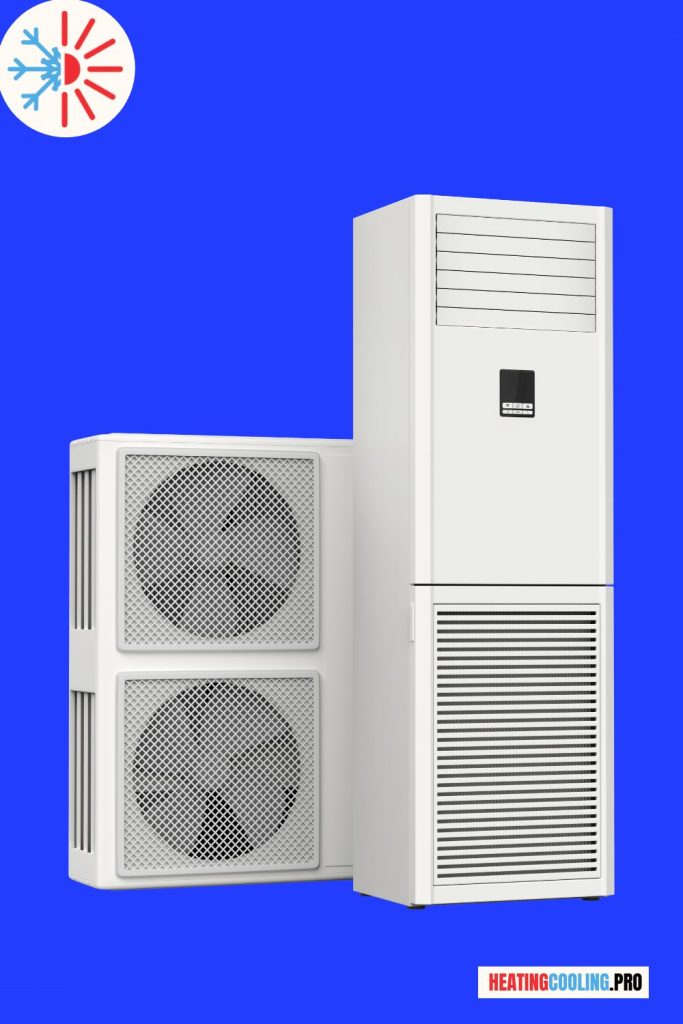
- Single-zone mini split air conditioners are best for small homes or apartments. They cool one specific area or zone in your home.
- Dual-zone mini split air conditioners are best for medium-sized homes. They cool two specific areas or zones in your home.
- Multi-zone mini split air conditioners are best for large homes. They cool multiple specific areas or zones in your home.
- Each type of mini split air conditioner has its own advantages and disadvantages. For example, single-zone mini split air conditioners are the most affordable, but they are not as efficient as dual-zone or multi-zone mini split air conditioners.
If you are unsure which type of mini split air conditioner is best for you, read on to learn more about the different types of mini split air conditioners on the market.
- Single-Zone Mini Split Air Conditioners: Single-zone mini split air conditioners are the most affordable type of mini split air conditioner. These air conditioners are ideal for cooling a single room or zone. However, they are not as efficient as dual-zone or multi-zone mini split air conditioners, so they are not recommended for large or multi-room homes.
- Dual-Zone Mini Split Air ConditionersDual-zone: mini split air conditioners are more efficient than single-zone mini split air conditioners. They are ideal for cooling two zones or rooms in your home. Dual-zone mini split air conditioners come with two indoor units and one outdoor unit.
- Multi-Zone Mini Split Air ConditionersMulti-zone: mini split air conditioners are the most efficient type of mini split air conditioner. They are ideal for cooling multiple zones or rooms in your home. Multi-zone mini split air conditioners come with multiple indoor units and one outdoor unit.
A mini split air conditioner is a great option for cooling a specific area of your home. Mini split air conditioners are more efficient than window air conditioners and they don’t take up any space in your window. A mini split air conditioner is also a great option for cooling two zones or rooms in your home. Dual-zone mini split air conditioners come with two indoor units and one outdoor unit. If you need to cool more than two zones or rooms, you can choose a multi-zone mini split air conditioner. Multi-zone mini split air conditioners come with multiple indoor units and one outdoor unit.
Advantages of Mini Split Air Conditioners
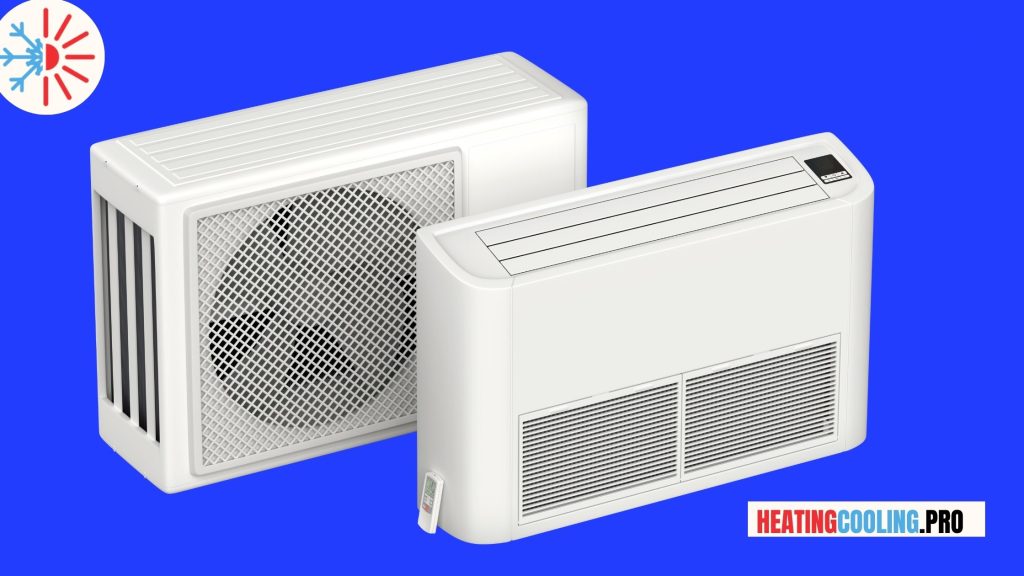
Mini-split air conditioners offer a range of compelling advantages that make them an excellent choice for both residential and commercial applications. Let’s dive into these advantages to better understand why mini-split systems are gaining popularity.
Energy Efficiency and Temperature Control
Mini-split air conditioners are highly energy-efficient. Unlike central air systems that cool the entire house, mini-splits allow you to cool or heat only the rooms you’re using. This targeted approach minimizes energy wastage, leading to significant cost savings on your energy bills. One of the standout features of mini-split systems is their ability to provide customized temperature control for different zones in your home. Each indoor unit can be individually adjusted, ensuring that you have the perfect temperature in every room. This precision contributes to enhanced comfort and reduced energy consumption.
Ease of Installation and Zoning Capabilities
Installing a mini-split air conditioner is relatively straightforward, especially when compared to the complex installation process of central air conditioning systems. Mini-splits don’t require extensive ductwork, making the installation less invasive and more cost-effective. In most cases, a professional HVAC technician can have your mini-split system up and running in a matter of hours.
Mini-split systems offer zoning capabilities that traditional HVAC systems cannot match. You can create multiple zones within your home, each with its own thermostat and temperature settings. This means you can cool or heat the rooms you’re using while leaving others untouched, further reducing energy consumption.
Quiet Operation and All-Year Comfort
Mini-split air conditioners are known for their quiet operation. The indoor units are typically whisper-quiet, ensuring that your comfort doesn’t come at the expense of peace and quiet. You can enjoy a comfortable environment without the disruptive noise often associated with traditional window units or central air systems.
Many mini-split systems come equipped with a heat pump, which allows them to reverse the cooling cycle and provide heating during colder months. This dual functionality ensures that you can maintain a comfortable temperature in your home throughout the year, eliminating the need for separate heating and cooling systems.
Space-Saving Design With Enhanced Air Quality
Ductless mini-split systems are compact and don’t require extensive space for installation. The indoor units can be mounted on walls or ceilings, and the outdoor unit is typically smaller than traditional condenser units. This space-saving design is ideal for homes with limited outdoor space or aesthetic considerations. Mini-split systems often come with advanced filtration features that improve indoor air quality. They can capture dust, allergens, and other airborne particles, making the air in your home cleaner and healthier for you and your family.
Minimal Maintenance
Maintaining a mini-split air conditioner is relatively easy. Regular cleaning of the indoor units and changing or cleaning the filters are typically the primary maintenance tasks. This simplicity reduces maintenance costs and ensures that your system continues to operate efficiently.
Comparison with Other Cooling Options
When it comes to cooling your home, you have several options to consider. To help you make an informed decision, let’s compare mini-split air conditioners with other common cooling solutions: window units and central air conditioning.
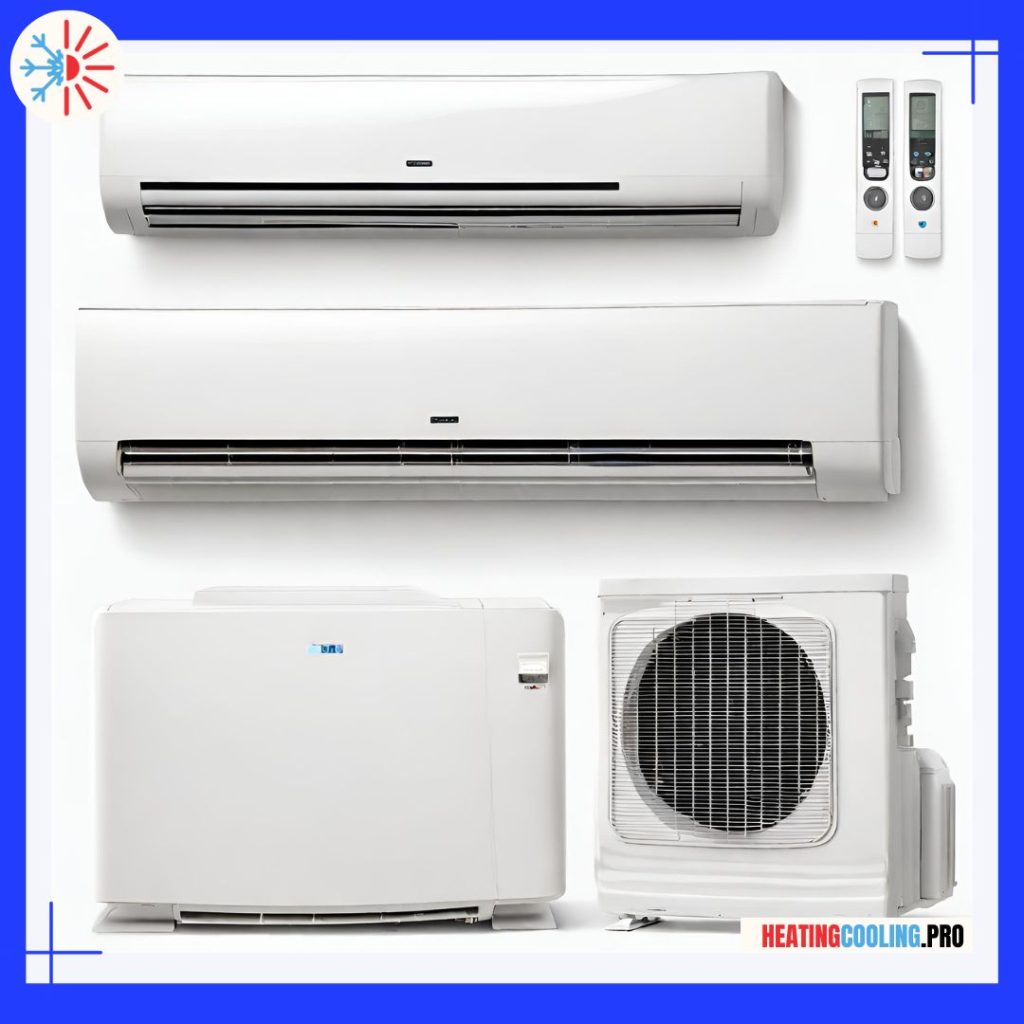
Mini-Split Air Conditioners vs. Window Units
Mini-Split Air Conditioners
Pros:
- Energy-efficient and cost-effective due to zoning capabilities.
- Quiet operation with indoor units.
- Improved aesthetics as indoor units can be wall-mounted or ceiling-suspended.
- Suitable for both single-zone and multi-zone applications.
- All-year comfort with heating capabilities.
Cons:
- Requires professional installation.
- Upfront cost may be higher than some window units.
Window Units
Pros:
- Easy to install without professional assistance.
- Low upfront cost.
- Suitable for cooling individual rooms.
Cons:
- Less energy-efficient and can lead to higher energy bills.
- Noisier operation, disrupting peace and quiet.
- Blocks natural light and outside views.
- Limited cooling range.
Verdict: Mini-split air conditioners offer a more energy-efficient and versatile solution compared to window units. While they may have a higher upfront cost, the long-term savings and comfort make them a better choice for multiple zones or larger spaces.
2. Mini-Split Air Conditioners vs. Central Air Conditioning
Mini-Split Air Conditioners
Pros:
- Energy-efficient and cost-effective due to zoning capabilities.
- Easy installation without extensive ductwork.
- Customized temperature control for individual rooms.
- Suitable for both single-zone and multi-zone applications.
- All-year comfort with heating capabilities.
Cons:
- May have a slightly higher initial cost than central air systems.
Central Air Conditioning
Pros:
- Provides uniform cooling throughout the entire house.
- Well-established technology with a long history.
- Typically included in newly constructed homes.
Cons:
- Inefficient if you only need to cool specific rooms.
- Expensive installation, especially when ductwork is required.
- Often results in higher energy bills.
Verdict: Mini-split air conditioners excel in energy efficiency, flexibility, and cost savings. They are ideal for homes where customized temperature control and efficient cooling are top priorities. Central air conditioning, while effective for whole-house cooling, is less cost-effective and efficient for zoning.
Mini-split air conditioners offer a well-rounded solution that combines energy efficiency, precise temperature control, and a range of other benefits, making them a top choice for many homeowners. The ability to cool or heat specific rooms, quiet operation, and cost savings over time make them a versatile and practical cooling option.
Installation Process
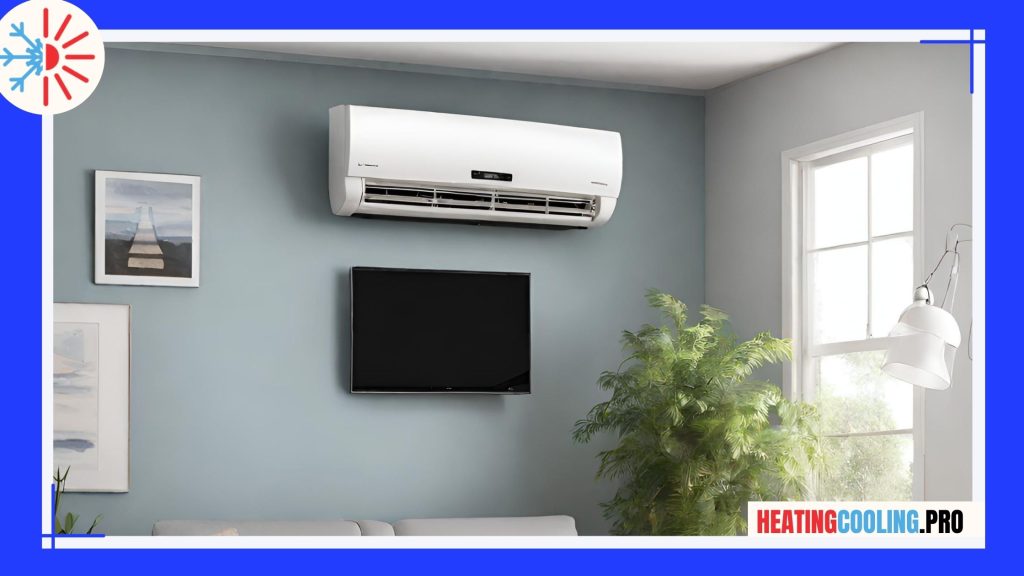
The installation of a mini-split air conditioner is a critical step in ensuring optimal performance and efficiency. While it’s possible to install a mini-split system yourself if you have HVAC experience, it’s generally recommended to hire a professional HVAC technician for this job. Professional installation ensures that the system is correctly set up, preventing potential issues down the line. Here’s an overview of the installation process:
Site Assessment
Before installation, the HVAC technician will assess your home to determine the best locations for both the indoor and outdoor units. They’ll consider factors such as:
- The size and layout of the rooms you want to cool or heat.
- The best location for the outdoor condenser unit, considering factors like airflow, noise, and accessibility for maintenance.
- The most suitable placement for the indoor units to ensure efficient cooling or heating and aesthetics.
The technician will then mount the indoor units on the walls or ceilings of the selected rooms. They’ll drill holes for the refrigerant lines, electrical connections, and condensate drain lines. The indoor units will be securely fastened, ensuring they are level and positioned correctly for optimal airflow.
The outdoor condenser unit is typically placed on a concrete pad or a mounting bracket. The technician will connect the refrigerant lines, electrical wiring, and drain lines between the indoor and outdoor units. Proper insulation and sealing are critical to prevent energy loss and ensure efficient operation.
Refrigerant Charge
The technician will charge the system with the appropriate amount of refrigerant to ensure it operates at peak efficiency. This step requires precision to avoid overcharging or undercharging, both of which can affect performance. Electrical connections are made to power the outdoor and indoor units. The technician will ensure that all wiring is safe and compliant with local electrical codes.
After installation, the technician will thoroughly test the system to ensure it’s functioning correctly. This includes checking for refrigerant leaks, verifying that the indoor units respond to temperature adjustments, and confirming that the system provides both cooling and heating as required.
Airflow and Balance
Proper airflow is crucial for the system’s performance. The technician will adjust the air louvers and fans in the indoor units to achieve balanced airflow and optimal comfort in each room. Once the system is installed and tested, the technician will provide you with instructions on how to operate and maintain your mini-split air conditioner. This may include information on changing filters, using the remote control, and setting temperature preferences for different zones.
Professional Maintenance
After installation, regular professional maintenance is essential to keep your mini-split system operating efficiently. Maintenance typically includes cleaning or replacing filters, checking refrigerant levels, inspecting electrical components, and ensuring that the system remains free of debris or obstructions.
In conclusion, professional installation is essential for mini-split air conditioners to ensure their proper functioning and efficiency. By hiring a qualified HVAC technician, you can enjoy all the benefits of your mini-split system without worrying about potential installation issues. It’s an investment in the long-term performance of your cooling and heating solution.
Choosing the Right Mini Split System
Selecting the right mini-split air conditioner system for your home is a crucial decision that will impact your comfort, energy efficiency, and overall satisfaction with your cooling and heating solution. Here’s a step-by-step guide to help you make an informed choice:
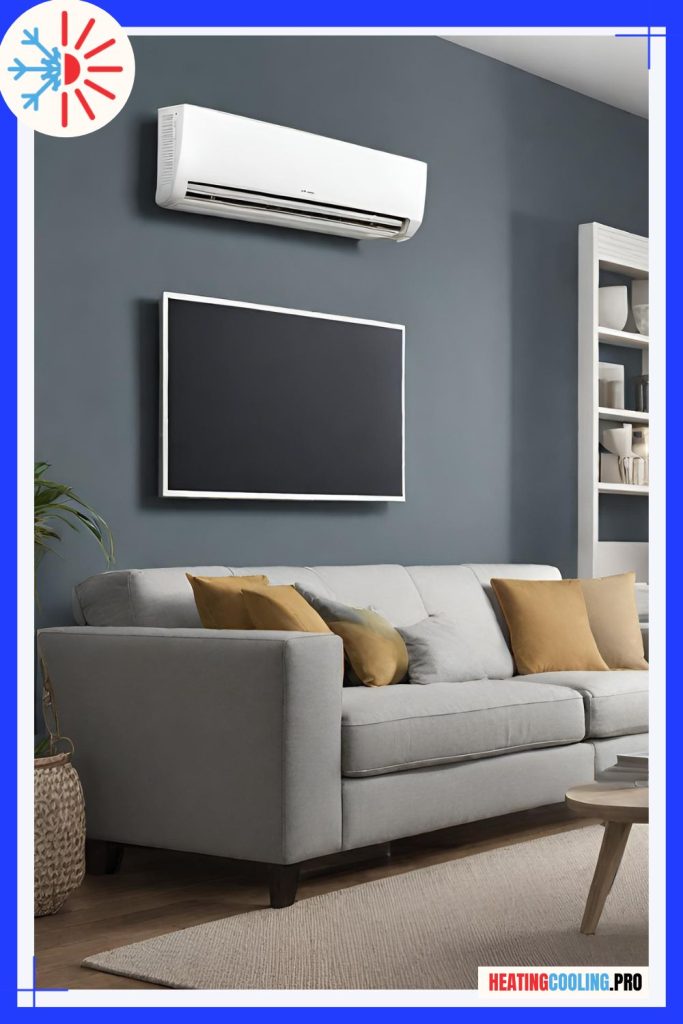
1. Determine Your Cooling and Heating Needs
Before you begin your search, assess your specific cooling and heating requirements. Consider factors like:
- The number of rooms or zones you want to cool or heat.
- The square footage of the areas you need to condition.
- Any unique characteristics of your home, such as architectural features or insulation.
Understanding your needs will guide you in selecting the right system size and type.
Decide whether you need a single-zone or multi-zone system. If you only want to control the climate in a single room or open space, a single-zone system will suffice. For multiple rooms or zones with different temperature requirements, a multi-zone system is the better choice. Mini-split systems offer various indoor unit types, including wall-mounted, ceiling-mounted, floor-mounted, and concealed ducted units. Choose the type that best matches your interior design and layout preferences.
Proper sizing is crucial for efficiency. Calculate the cooling capacity you need in British Thermal Units (BTUs) based on the square footage and insulation of the area you plan to cool. An HVAC professional can assist you in this calculation to ensure you choose the right system size.
Consider Energy Efficiency
Look for ENERGY STAR-rated mini-split systems, which are recognized for their energy efficiency. More efficient systems will provide better long-term cost savings. Research reputable brands and models in the market. Consider factors like reliability, warranty coverage, and customer reviews. It’s essential to choose a brand with a good track record for quality and customer support.
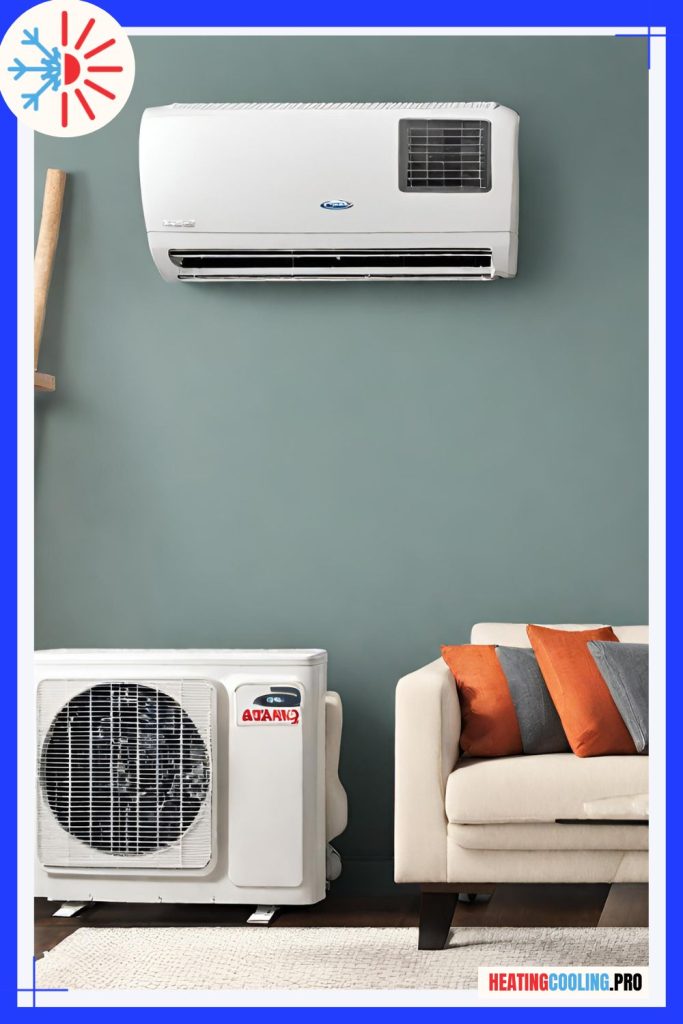
Set a budget for your mini-split system. While these systems offer long-term savings on energy bills, there is an initial cost involved. Balance your budget with the features and performance you desire. Always hire a professional HVAC technician to install your mini-split system. Proper installation is critical for performance and longevity. They will ensure the indoor and outdoor units are correctly placed, insulated, and connected.
Regular Maintenance
Once your system is installed, commit to regular maintenance. Clean or replace filters as recommended, and schedule annual maintenance checks to keep your system in top condition. By following these steps, you can confidently choose the right mini-split air conditioner system that meets your needs, offers energy efficiency, and provides lasting comfort in your home. Professional guidance and installation are key to a successful experience with your mini-split system.
Conclusion
In conclusion, mini-split air conditioners have emerged as a versatile and efficient solution for cooling and heating your home. These systems offer a range of benefits that make them a top choice for many homeowners:
- Energy Efficiency: Mini-splits are highly energy-efficient, allowing you to cool or heat only the rooms you’re using, resulting in cost savings and reduced energy consumption.
- Customized Temperature Control: The ability to set different temperatures for individual rooms ensures maximum comfort for everyone in your household.
- Ease of Installation: Installation is straightforward, especially when compared to central air systems. There’s no need for extensive ductwork, making it less invasive and more cost-effective.
- Zoning Capabilities: Mini-split systems allow you to create multiple climate zones, each with its own thermostat. This precise control further enhances energy efficiency.
- Quiet Operation: Enjoy a comfortable living environment without disruptive noise, thanks to the quiet operation of indoor units.
- All-Year Comfort: Mini-splits often come with heat pump capabilities, providing both cooling and heating in a single system.
- Space-Saving Design: Ductless mini-split systems are compact and aesthetically pleasing, making them a great choice for various interior designs.
- Enhanced Air Quality: Advanced filtration features improve indoor air quality, ensuring a healthier living environment.
- Minimal Maintenance: Regular maintenance is straightforward, reducing maintenance costs and keeping the system operating efficiently.
Whether you’re looking for a cooling solution for a single room or need precise climate control for an entire home, mini-split air conditioners offer a flexible and cost-effective answer to your needs. Their ability to adapt to your requirements, along with their efficiency, makes them a top choice in the world of HVAC systems. If you’re considering a mini-split air conditioner for your home, take the time to evaluate your specific needs, budget, and preferences. With the right system in place, you can enjoy the perfect climate control for your living space, enhancing your comfort and energy savings year-round.
In addition to their many advantages, mini-split air conditioners are also environmentally friendly due to their energy efficiency and reduced carbon footprint. By choosing this technology, you’re not only enhancing your own quality of life but also contributing to a more sustainable future. So, whether you’re looking to upgrade your current cooling system or are building a new home, consider the many benefits of mini-split air conditioners. With their versatility, efficiency, and precise climate control, they’re a smart choice for modern homeowners.






